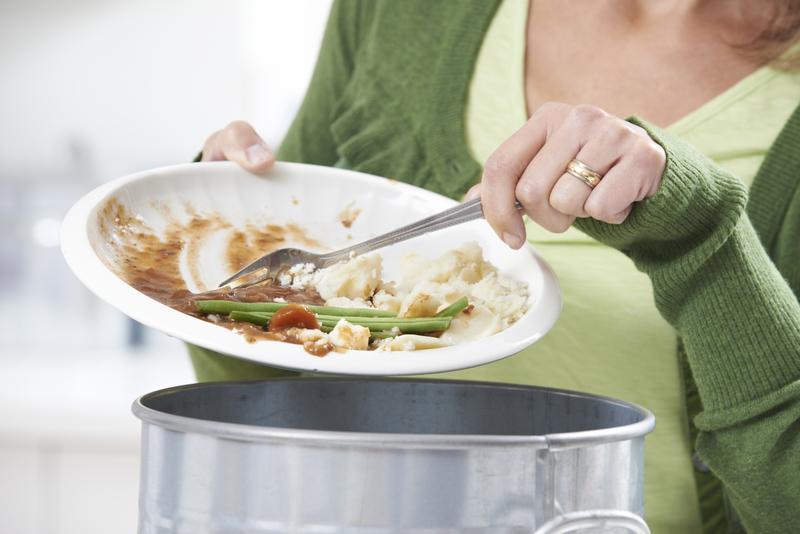Expert Tips for Saving Money on Bulky Waste Item Disposal
Disposing of large, unwanted items like furniture, appliances, or yard debris can quickly become expensive and stressful. Whether you're renovating, moving, or just decluttering your home, learning how to minimize costs associated with bulky waste item disposal is crucial. In this comprehensive guide, we'll share expert tips to save money on bulky waste removal, cover eco-friendly practices, and outline essential steps for homeowners, renters, and businesses alike.
Understanding Bulky Waste Item Disposal
Before diving into money-saving tactics, it's important to understand what qualifies as bulky waste. Typically, these items include:
- Old furniture (sofas, mattresses, wardrobes, tables)
- Large appliances (refrigerators, washing machines, ovens)
- Renovation debris (drywall, fixtures, carpeting)
- Outdoor items (bicycles, gardening tools, fences)
- Yard waste (tree branches, logs, large clippings)
Standard curbside collection services often refuse to pick up such items due to their size or handling requirements, leaving you with the challenge - and costs - of bulky waste collection. But with the right approach, you can reduce or even eliminate these fees.

Evaluate Your Bulky Waste Disposal Options
There are several ways to dispose of bulky items, and each has its cost implications. The main options include:
- Municipal bulky item pick-up services
- Private junk removal companies
- Donation to charities or thrift stores
- Recycling or upcycling
- DIY transport to local landfill or recycling center
- Online marketplaces and community giveaways
Choosing the right method can make all the difference in your overall spending.
Top Money-Saving Tips for Bulky Waste Removal
1. Take Advantage of Free Municipal Collection Services
Many towns and cities offer free or low-cost bulky waste pick-up days as part of their annual or biannual schedules. Residents are usually allowed to schedule a limited number of pick-ups or place certain quantities of large items on the curb for collection.
- Check your local government website for scheduled collection days and guidelines.
- Adhere to size, weight, and types of items allowed to avoid extra charges.
- If pick-up is limited, try coordinating with neighbors to combine loads and split costs.
If you miss the free collection dates, some municipalities may still offer on-demand pick-up for a smaller fee than private companies.
2. Reuse, Recycle, and Repurpose When Possible
One of the most cost-effective and environmentally-friendly approaches to bulk waste disposal is to avoid throwing items away altogether. Explore giving your items a second life by:
- Donating usable furniture or appliances to local charities such as Goodwill, Salvation Army, or Habitat for Humanity ReStores. Some organizations will pick up your items for free.
- Listing your items on online platforms like Facebook Marketplace, Craigslist, Freecycle, or Buy Nothing groups. You can often find someone willing to pick up perfectly usable bulky items at no cost to you.
- Upcycling or refurbishing broken items for your own use or to sell.
This not only saves you money but also helps reduce landfill waste!
3. Compare Quotes from Private Junk Removal Companies
If municipal services are insufficient and you must hire a private company, it pays to shop around. Junk removal prices can vary significantly depending on:
- Item volume and type
- Accessibility (e.g., curbside vs. upstairs pickup)
- Distance to disposal or recycling facility
Expert tip: Always get at least three quotes and clearly describe the items for an accurate estimate. Some companies offer online calculators or special promotions - don't be afraid to ask for discounts, especially for curbside collection or if your load is all one type (like all metal or e-waste).
4. DIY Transport to Landfill or Recycling Center
If you have access to a large vehicle (or can borrow/rent one inexpensively), transporting your bulky waste directly to a landfill or recycling facility can offer substantial savings.
- Many disposal centers charge by the load or by weight, which is often less expensive than a removal company's service charge.
- Check with your local dump for acceptable items and any fees - some will even take appliances, e-waste, or yard waste for free.
- Combining your load with a neighbor's can decrease costs further.
Remember to bundle and secure your load properly and follow all local safety regulations when hauling bulky items.
5. Disassemble Large Items to Reduce Volume
Cutting down oversized items into smaller, manageable pieces can reduce removal costs. Most services price loads by volume (like "half truck" or "full truck"); breaking down furniture, knocking apart cabinets, or flattening boxes helps minimize the calculated space.
- Use basic tools (screwdrivers, hammers, saws) to disassemble as much as possible.
- Place smaller pieces in bags or boxes for easier handling and less visual bulk.
Note: Be cautious with items containing hazardous materials (like refrigerators with refrigerants) - these often require special handling.
6. Group Items for Bulk Discounts
Junk removal services often provide discounts for larger loads or "all-in-one" pickups. Plan your house cleanout strategically:
- Get rid of all bulky items at once to maximize your allowance per collection or to qualify for bulk rates.
- Coordinate with neighbors or friends to share pickup fees.
This approach is especially useful for large moves, post-renovation clearouts, or neighborhood yard sales.
7. Research Local Recycling Programs for Specialty Items
Many local governments or private recyclers accept specific items like electronics, mattresses, or appliances - sometimes at no cost! Search for:
- E-waste drop-off events or permanent collection sites
- Appliance recycling programs (sometimes offering rebates for fridges or AC units)
- Mattress recycling initiatives to keep them out of the landfill
By separating out recyclable items from regular bulky waste, you can dramatically cut your disposal costs and help the environment.
8. Avoid Penalties: Know What NOT To Do!
Improper disposal of large items can lead to expensive fines and penalties. Don't:
- Dump items illegally on roadsides, alleys, or vacant lots
- Leave bulky waste outside scheduled pick-up times
- Mix hazardous materials with regular waste streams
Sometimes, the cost of the fine or cleanup is far greater than the original disposal fee. Always follow local disposal regulations and schedules.
Bulky Waste Disposal on a Budget: Quick Checklist
- Audit your items: Sort what can be donated, sold, recycled, or must be trashed.
- Call your city: Ask about free or subsidized collection events.
- List items online: Try to give away usable pieces before disposal.
- Request multiple junk removal quotes if needed.
- Break down big items to save volume-based fees.
- Pool items with neighbors for shared pickup or transport.
- Double-check for specialized recycling drop-offs in your area.
Eco-Friendly Bulky Waste Solutions
Prioritizing eco-friendly bulky waste disposal methods is not just good for your wallet - it benefits your community and the planet. Consider the following:
- Give to others: If the item is usable, someone else will often collect it for you.
- Repurpose where possible: Broken dressers become tool chests, old doors can be desks or tables!
- Separate recyclables: Metal, wood, and electronics often have dedicated recycling streams.
- Avoid landfills: Only landfill what you cannot give, repurpose, or recycle.
Many charities and community organizations thrive on donations of used furniture and appliances, contributing to social programs and reducing unnecessary waste.
Smart Tips from Industry Professionals
We spoke with several bulky waste management professionals for additional insider advice:
-
"Time your clean-out around city bulk waste amnesty days to avoid all fees."
- John, Urban Waste Manager -
"Always disassemble wherever possible - a collapsed wardrobe is half the cost to haul as a standing one."
- Sara, Junk Removal Specialist -
"Don't forget about special recycling grants and rebates for electronics and appliances - some utilities pay YOU to get rid of old units."
- Mike, Recycling Center Manager

Frequently Asked Questions About Bulky Waste Item Disposal
What counts as 'bulky waste'?
Bulky waste includes any item too large or heavy for standard garbage collection, such as sofas, beds, appliances, and large yard debris.
How do I find my city's bulky item disposal schedule?
Visit your city or municipality's official website, search for "bulky item pick-up," or call the sanitation or public works department.
Can I save money by donating my bulky waste?
Absolutely! Many organizations will collect usable furniture and appliances for free, saving you time and disposal fees.
What's the cheapest way to dispose of a single large item?
Check if your city offers one-time free or low-cost pick-ups for single items. Alternatively, list it for free pickup in local online groups.
Conclusion: Taking Control of Bulky Waste Disposal Costs
Saving money on bulky item disposal doesn't have to be complicated. By planning ahead, exploring all local options, reusing where possible, and being resourceful, you can cut down or even eliminate disposal expenses. Remember to stay informed about local schedules, embrace reuse and recycling, and never hesitate to ask for a better deal from disposal services.
With these expert tips for saving money on bulky waste removal, you'll keep both your home and wallet clutter-free while contributing to a cleaner, greener community.
```